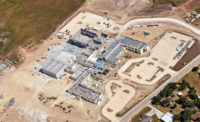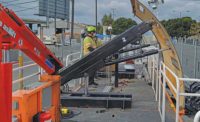Like many other public entities, the agency neither has the funds required to fully address problems associated with its aging rail lines nor is it able to continually monitor their structural health, which is what makes Devon-Sheridan unique.
Data culled from the study will be used to develop models to predict the long-term performance of the viaduct. The findings also will help CTA develop simpler and less costly studies of hundreds of other similar structures so that agency engineers can better determine if or when repairs or replacements are warranted.
"The comprehensive data set derived from the Devon-Sheridan study will allow the CTA to interpret simpler data gathered by less expensive means," says Daniel Marron, chief research engineer with Northwestern's research institute. "We're currently in the process of determining what the study's most representative data are, so we can use the data as a basis for developing simpler monitoring methods."
The Devon-Sheridan study involves a series of electronically conductive strain gauges, some 17 in all, either affixed to the supplementary supports or to steel members embedded in their concrete footings. As trains cross the overpass, their weight simultaneously compresses the concrete, supplementary shoring and gauges. When the gauge shape changes, so does the device's conductive properties, which are measured and recorded by an onsite computer.
The computer, an off-the-shelf system common to the automobile industry, transmits the data it collects to the research institute via a continuous, secure Internet connection.
According to Kosnick, the system records two types of data. In addition to the "burst" data it logs when trains cross the viaduct, long-term data is recorded hourly to determine how the structure responds to load cycles and environmental changes.
Both data sets are required in order to assess the structure's performance under slowly and rapidly changing conditions.




Post a comment to this article
Report Abusive Comment